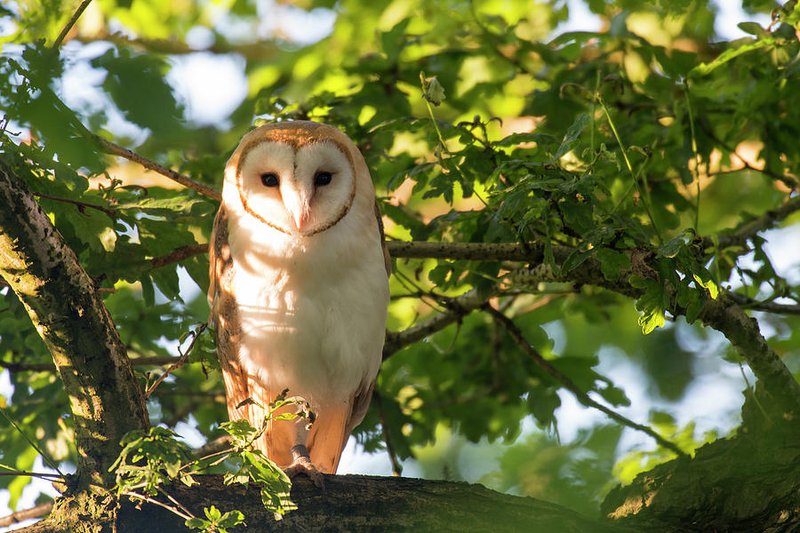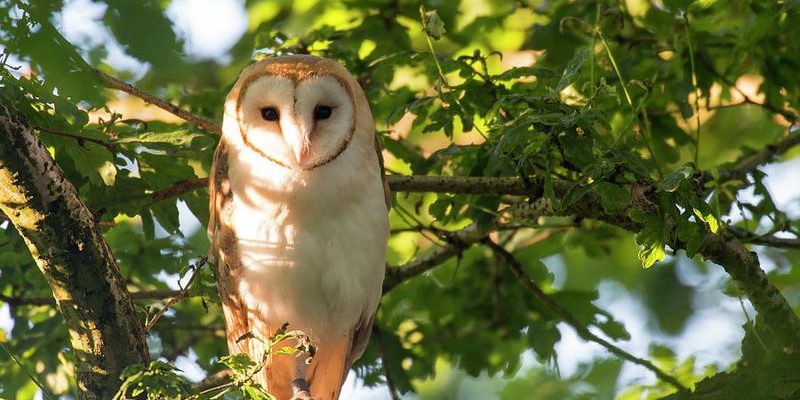
Understanding Barn Owls: Key Characteristics
Barn owls are known for their distinctive appearance. Honestly, they look like they stepped straight out of a storybook. Their heart-shaped face is one of their most notable features, giving them a somewhat ghostly appearance. This shape isn’t just for show; it helps funnel sound to their ears, enhancing their hunting abilities. You might also notice their strikingly pale feathers, which can range from white to a soft, buff color.
When observing a barn owl, look for these features:
- Heart-shaped face: This unique shape is perfect for catching sound.
- Pale plumage: Their feathers are typically light-colored, which helps them blend into the night sky.
- Long wings: Barn owls have long, broad wings that allow them to glide silently.
Their size can range from about 12 to 24 inches in length, making them medium-sized compared to other owls. You might see them perched on a fence post or gliding over an open field, looking for small mammals to hunt.
Where to Look for Barn Owls
Finding a barn owl is all about knowing where they like to hang out. They prefer open habitats like fields, farmland, and grasslands—places where they can hunt for small rodents. You might also find them near old barns, abandoned buildings, or other structures that provide nesting sites.
Here’s a tip: barn owls are often active during twilight or nighttime. If you’re hoping to spot one, try taking an evening stroll in areas known for their presence. As the sun goes down, keep an eye out for any movement in the grass or a silhouette against the sky.
Some ideal locations include:
- Farmlands: Look around fields or meadows where there’s tall grass.
- Old buildings: Barns and old sheds are perfect nesting spots for these owls.
- Wetlands: They can also be found near marshlands, as these areas often attract small mammals.
If you’re near a rural area, your chances of spotting a barn owl increase significantly.
Behavior: Understanding Their Hunting and Flight Patterns
Barn owls have some fascinating behaviors that play a big role in how you might identify them. These birds are known for their incredible hunting skills. They rely heavily on their acute hearing, thanks to that heart-shaped face we talked about earlier. When they hunt, they can actually hear the rustling of mice in the grass, making them effective nocturnal predators.
As for their flight, barn owls are masters of silent gliding. Unlike some other birds of prey, they fly without making much noise. This makes them stealthy hunters, allowing them to sneak up on their prey. When they hunt, they often fly low to the ground, weaving in and out of tall grass or shrubs.
Here’s what to look for in their behavior:
- Gliding flight: Observe them flying silently, almost like a shadow.
- Hunting techniques: Watch for them hovering over a spot before diving down.
- Vocalizations: Listen for their distinctive screech, which sounds more like a scream than a hoot.
If you see a bird flying low and silently over a field, take a closer look. It just might be a barn owl!
Distinguishing Between Similar Species
You might be wondering, “Are there other owls that look like barn owls?” Great question! There are a few species that can be easily confused with barn owls, but knowing the differences can help you make a solid identification.
For instance, the Eastern Screech Owl is one that some people mistake for a barn owl. While they both have unique facial features, the screech owl is generally smaller, with a more rounded body and a different coloration. Another common one is the Great Horned Owl; they have tufts that look like ears, which barn owls do not have.
To help you differentiate, here are some key points:
- Size: Barn owls are medium-sized; compare them to known sizes of other owls.
- Face shape: Look for the heart shape; it’s a strong indicator of a barn owl.
- Coloring: If it’s mostly white and tan, it’s likely a barn owl.
When in doubt, consider their habitat too. Barn owls favor open fields and structures, while other species might prefer wooded areas.
Time of Day: When to Spot Barn Owls
To maximize your chances of spotting a barn owl, timing is everything. These owls are primarily nocturnal, meaning they are most active at night. However, they can also be spotted during the early morning or late evening—right before dawn or after sunset.
If you plan to go owl watching, consider these tips:
- Go during twilight: This is when barn owls are most likely to hunt.
- Choose clear nights: They are easier to spot when the moon is bright, lighting up the fields.
- Be patient: Sometimes, it takes a little while to spot them, so give yourself time to observe quietly.
Remember, though, that barn owls are excellent at being stealthy. You might be surprised at how easily they blend into their surroundings.
Finding and identifying a barn owl in the wild can be an exhilarating experience. It’s not just about spotting a bird; it’s about connecting with nature and appreciating the incredible adaptations these owls have developed to thrive in their environments.
So, next time you’re wandering through open fields or near old barns, keep your eyes peeled for that beautiful heart-shaped face and those silent wings. Whether you see one or not, take a moment to soak in the natural world around you—you never know what other wonders might unfold. Happy owl watching!

